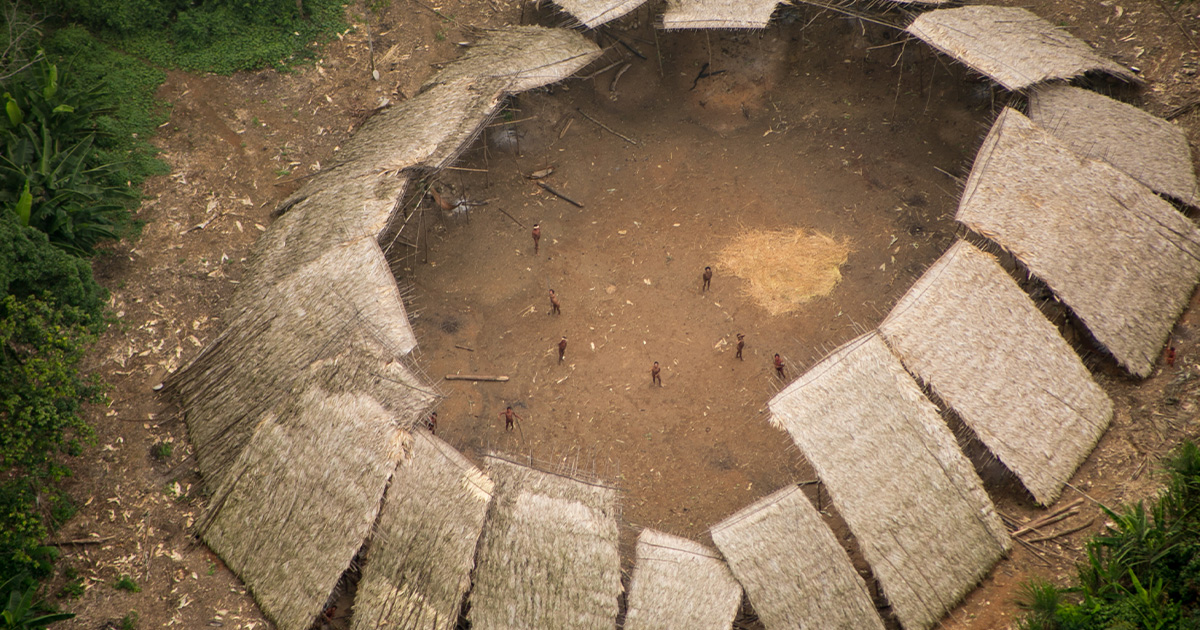Guardians of the Amazon
Only eight years ago, an uncontacted tribe living in the Amazon rainforest was rediscovered, after years of assuming their extinction.
Very little is known about the Moxihatetema tribe, but their reputation among other indigenous tribes earns them a title of reclusive warriors, as they are known to spontaneously go into hiding—only coming out to fight.
This is what we know about them.

Who They Are
The Moxihatetema tribe is one of three Yanomami indigenous groups in the area—most of whom were discovered already back in the 1940s when subgroups of the tribe had migrated after intergroup conflict.
But the Moxihatetema didn’t follow—they remained isolated in the mountainous region, keeping their existence a secret.
 Gleilson Miranda, CC BY 2.0, Wikimedia Commons
Gleilson Miranda, CC BY 2.0, Wikimedia Commons
Tribal Conflict
The other Yanomami tribes quickly experienced conflict with other indigenous tribes as they branched out, and the Moxihatetema tribe—being secluded and unseen—instantly became targets of accusations of sorcery, faced with “unexplainable” demise caused by new diseases.
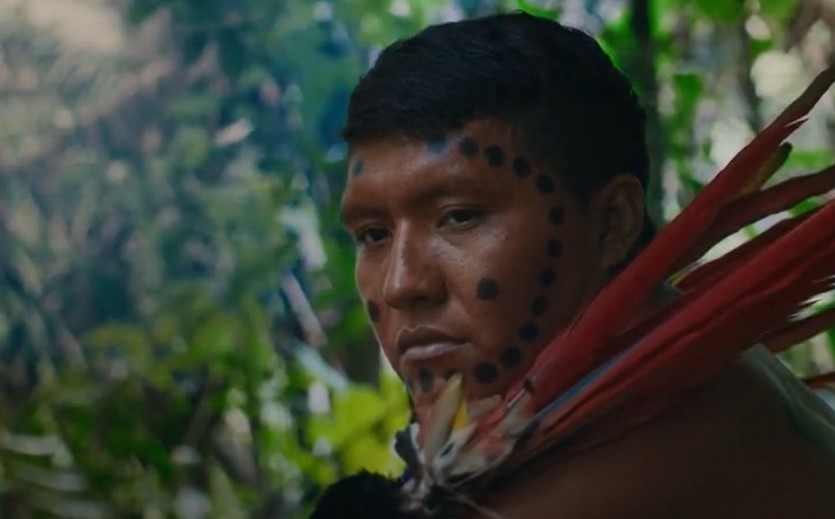 Gullane, The Last Forest (2021)
Gullane, The Last Forest (2021)
Reputation
Conflict escalated quickly and the Moxihatetema people had to fight for their lives. As a result, the Moxihatetema gained a reputation as combative warriors—always looking for a fight.
 Gleilson Miranda, CC BY 2.0, Wikimedia Commons
Gleilson Miranda, CC BY 2.0, Wikimedia Commons
They Stood Alone
During the 1970s and into the 1980s, conflict continued with both the Yanomami tribe and Ninam tribe against the Moxihatetema—leaving them to stand and fight alone.
It was safe to say the Moxihatetema was not friendly with many people other than themselves—but with good reason.
 Gullane, The Last Forest (2021)
Gullane, The Last Forest (2021)
Attacks on Moxihatetema
At one point, the Ninam tribe invaded the Moxihatetema village in search of wives. The Ninam tribe was vigorously fought off with arrows.
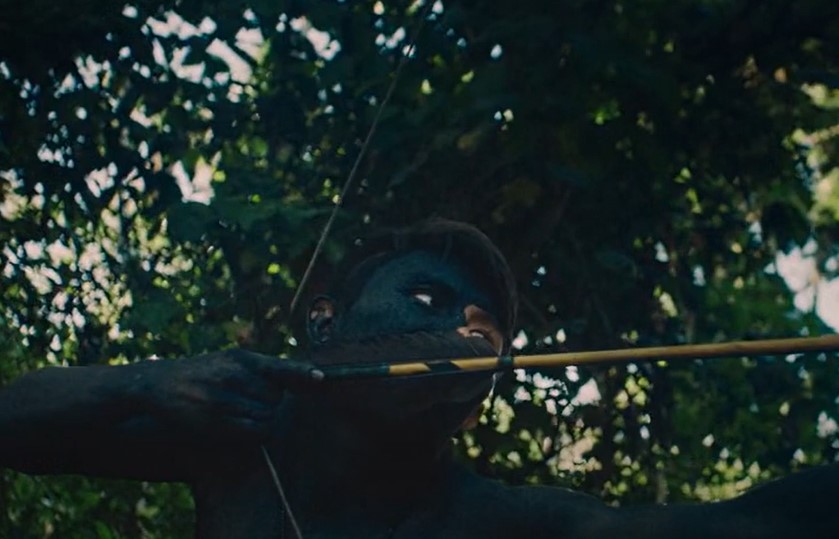 Gullane, The Last Forest (2021)
Gullane, The Last Forest (2021)
Another Invasion
In 1967, the Ninam tribe invaded the Moxihatetema village again, this time to avenge the death of a Ninam tribes’ member who had gone missing in their territory.
 Gullane, The Last Forest (2021)
Gullane, The Last Forest (2021)
Their Official Reputation
At that point, the Moxihatetema were labelled as “enemy sorcerers” and were then blamed for the sudden deaths of other men in various other tribes.
Apparently, the Moxihatetema warriors didn’t mind this reputation though, as they were said to be proud of always being “armed and ready.”
 Gleilson Miranda, CC BY 2.0, Wikimedia Commons
Gleilson Miranda, CC BY 2.0, Wikimedia Commons
A New Threat
In 1986, the opening of the Cambalacho airstrip completely changed the dynamic of the region, adding more threat to the tribes.
This increased access for unlawful miners and loggers—which encroached on their land and hurt their people.
 Gullane, The Last Forest (2021)
Gullane, The Last Forest (2021)
Forced to Relocate
The Moxihatetema were forced to relocate far from where they had lived for decades, to the other end of the Yanomami territory—but something good came with it.
 Gullane, The Last Forest (2021)
Gullane, The Last Forest (2021)
The End of an Era
Upon relocation, the Moxihatetema no longer had the attention of the enemy Yanomami tribes, as they were now facing further challenges themselves—thus brining the conflict to an end.
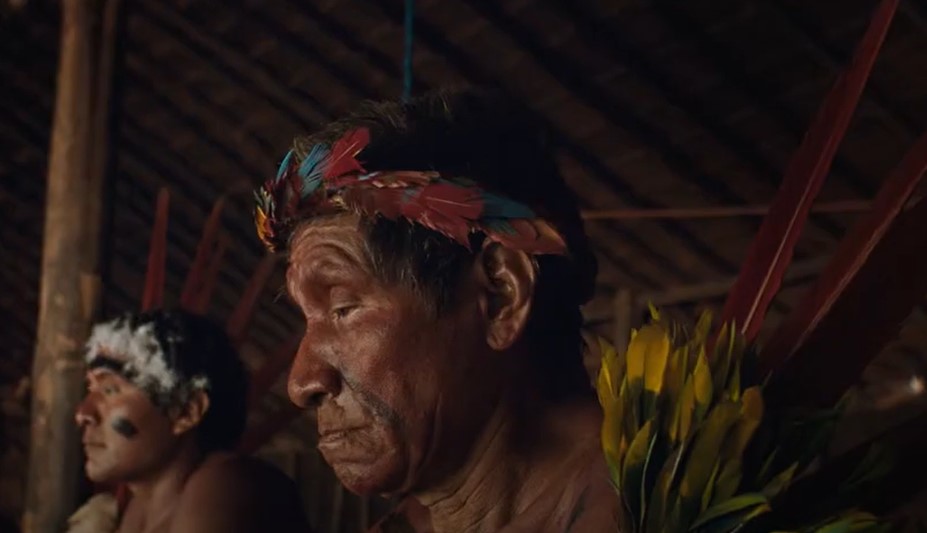 Gullane, The Last Forest (2021)
Gullane, The Last Forest (2021)
Living in Isolation
During the 1990s, the Moxihatetema tribe was able to live completely uncontacted with only brief sightings of them circulating the region.
Until rumors of an attack surfaced.
 Gleilson Miranda, CC BY 2.0, Wikimedia Commons
Gleilson Miranda, CC BY 2.0, Wikimedia Commons
The Sudden Disappearance
Rumors quickly spread about a battle between the Moxihatetema and armed outsider prospectors—resulting in the sudden disappearance of the Moxihatetema tribe.
Years went by with absolutely no evidence of their existence.
 Gullane, The Last Forest (2021)
Gullane, The Last Forest (2021)
International Speculation
Eventually, there was international speculation about the disappearance of the group, with supporters claiming they were victims of the whites’ illnesses and violence.
This sparked a call for change, to further protect indigenous tribes.
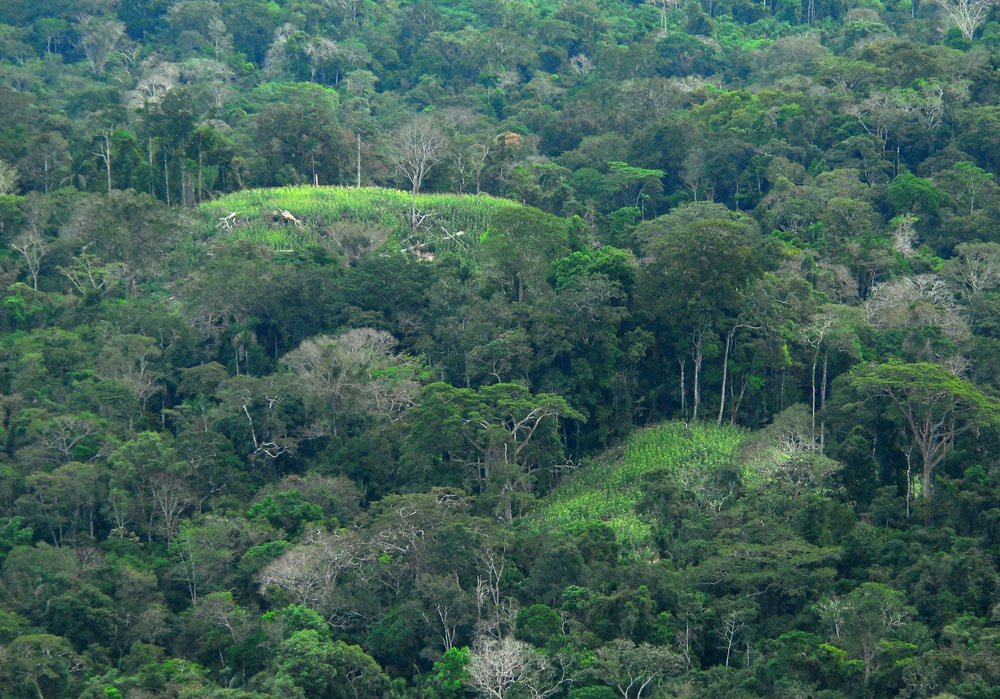 Gleilson Mira, CC BY 2.0, Wikimedia Commons
Gleilson Mira, CC BY 2.0, Wikimedia Commons
The Moxihatetema Warriors Are Back
The Moxihatetema are notorious for going MIA and then suddenly resurfacing to remind us that they’re still here—especially in times of threat.
And this was the case once again.
 Gleilson Miranda, CC BY 2.5 BR, Wikimedia Commons
Gleilson Miranda, CC BY 2.5 BR, Wikimedia Commons
They’ve Been Watching
In 1995, they were rediscovered when two villainous prospectors had been unexpectedly struck by arrows coming at them from the edge of the forest—with markings matching the Moxihatetema tribe.
But their activity was short lived.
 Gullane, The Last Forest (2021)
Gullane, The Last Forest (2021)
Back Into Hiding
After this incident, the reclusive tribe had withdrawn themselves once again, and they were practically forgotten about for nearly fifteen years.
Until 2011, when various incidences of their presence surfaced once more with brief sightings from Yanomami tribe people, and some prospectors.
 Gullane, The Last Forest (2021)
Gullane, The Last Forest (2021)
A Protection Agency Moved In
At that point, the Yanomami and Ye’kwana Ethno-environmental Protection Front decided to find, and start monitoring the Moxihatetema village with certain apprehension.
And protections were put in place to stop and prevent further unlawful mining and logging in the Yanomami territories.
 Gullane, The Last Forest (2021)
Gullane, The Last Forest (2021)
The Abandoned Village
In late 2014, the protection agency flew over the Moxihatetema village that they had previously located a couple years back, and found it completely empty.
 Gleilson Miranda, CC BY 2.0, Wikimedia Commons
Gleilson Miranda, CC BY 2.0, Wikimedia Commons
Speculation Once Again
Once again, there was speculation that the tribe had been decimated in a conflict involving unlawful prospectors.
Months had gone by and they had not returned.
 Gleilson Miranda, CC BY 2.0, Wikimedia Commons
Gleilson Miranda, CC BY 2.0, Wikimedia Commons
A New Village
But, in 2016, in true Moxihatetema fashion, the tribe resurfaced yet again. They were found living in a newly built village with large crop fields—mostly bananas.
 Isamarvda, CC BY-SA 3.0, Wikimedia Commons
Isamarvda, CC BY-SA 3.0, Wikimedia Commons
Population
It is estimated that there are about 70 to 80 Moxihatetema tribe members in the village—this number is based on the size of their dwelling.
Housing Structure
The Moxihatetema live in a collective home of elliptical shape, made of materials from the forest. Each family has its own hearth where food is prepared and cooked throughout the day.
At night they sleep in hammocks.
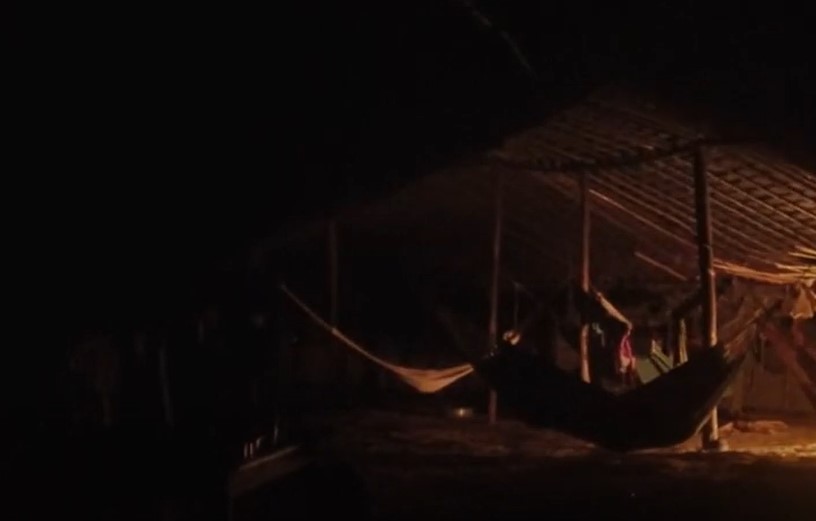 Gullane, The Last Forest (2021)
Gullane, The Last Forest (2021)
Size of Tribal Structures
A photo of the structure counts 17 sections—which is typically built to house a group of over 60-80 people in similar tribes. Some Yanomami houses are built to accommodate up to 400 people.
More sections are added as their community grows.
 Gullane, The Last Forest (2021)
Gullane, The Last Forest (2021)
Yanomami Partner
Davi Kopenawa, a Yanomami tribe member who works with outsiders to help learn about the uncontacted tribes of the Amazon, has offered valuable information about how the Moxihatetema tribe continues to live completely isolated.
 Fernando Frazão, CC BY 3.0 BR, Wikimedia Commons
Fernando Frazão, CC BY 3.0 BR, Wikimedia Commons
Secret Hide Outs
Kopenawa claims the Moxihatetema people have a secret path that leads them to a hiding place. In moments of threat, they can abandon their home and have a place to hide.
 Fora do Eixo, CC BY-SA 2.0, Wikimedia Commons
Fora do Eixo, CC BY-SA 2.0, Wikimedia Commons
Attempted Interaction
The Yanomami tribes have approached, leaving gifts such as modern tools and blades, but the Moxihatetema people do not accept them. It is said that they prefer to the use the stone-axe as they’re used to it.
 Gullane, The Last Forest (2021)
Gullane, The Last Forest (2021)
Lifestyle
The Moxihatetema continue to live a hunter-gatherer lifestyle, isolated deep in the rainforest, avoiding all contact with outsiders and other tribes.
They grow various fruits and vegetables and hunt for small game using handmade bows and arrows.
 Gleilson Miranda, CC BY 2.0, Wikimedia Commons
Gleilson Miranda, CC BY 2.0, Wikimedia Commons
Traditional Clothing
The Moxihatetema, much like other uncontacted tribes, wear minimal coverings on their body. They’re either completely unclothed, or they use forest materials to cover their body parts.
 Gleilson Miranda, CC BY 2.0, Wikimedia Commons
Gleilson Miranda, CC BY 2.0, Wikimedia Commons
Cultural Traditions
Given that the Moxihatetema tribe remains uncontacted, most of their customs and traditions are unknown, and can only be assumed based on similarities to other local tribes.
 Gleilson Miranda, CC BY 2.0, Wikimedia Commons
Gleilson Miranda, CC BY 2.0, Wikimedia Commons
Marrying
It is assumed that the Moxihatetema tribe practices intertribal marriage and procreation, as they do not interact with other known tribes.
However, prior to complete isolation, the Moxihatetema tribe had similar marriage practices to that of the Yanomami tribe.
 Gullane, The Last Forest (2021)
Gullane, The Last Forest (2021)
Yanomami Marrying Practices
The Yanomami tribe, practices bilateral cross-cousin marriage—meaning the males are expected to marry the daughters of their parent’s opposite gender sibling.
 Gullane, The Last Forest (2021)
Gullane, The Last Forest (2021)
A Growing Community
Remarkably, since the last sighting of the Moxihatetema tribe, it appears to have grown by two families. Once again, this is determined by the additions built onto their dwelling.
But this growth is met with further concerns from protection agencies.
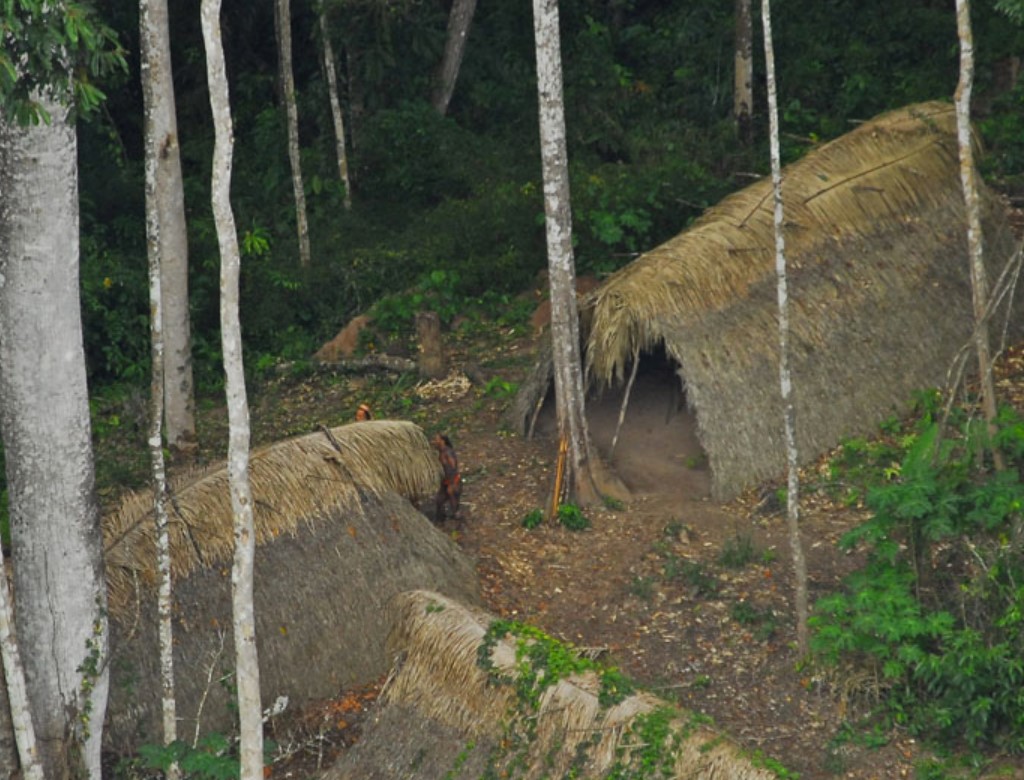 Gleilson Miranda, CC BY 2.0 , Wikimedia Commons
Gleilson Miranda, CC BY 2.0 , Wikimedia Commons
Unlawful Mining Continues to Get Worse
Experts fear that unlawful mining is only becoming a larger problem.
The Moxihatetema tribe, along with other Yanomami tribes, are losing land and becoming dangerously close to mining operations.
A 1993 Incident
To shed light on the seriousness of the situation, in 1993, miners ended the lives of 16 Yanomami people—many of them infants, children, and the elderly. The tribe members were not a threat to the miners and were unarmed.
Their village was burned to the ground.
 Gullane, The Last Forest (2021)
Gullane, The Last Forest (2021)
Living in Fear
It’s obvious that the uncontacted tribes of the Amazon are perfectly capable of living successfully without any outsider intervention.
But as protection budgets are cut, the tribes remain in danger of losing their land—and their lives.
Remaining Completely Uncontacted
While these tribes continue to be monitored from afar as best as possible, the Moxihatetema has remained completely uncontacted to this day.
And although there haven’t been any recent reports of attacks, this infamous warrior tribe maintains their combative reputation, standing guard against threatening prospectors, and serving as guardians of the Amazon.
 Gullane, The Last Forest (2021)
Gullane, The Last Forest (2021)

